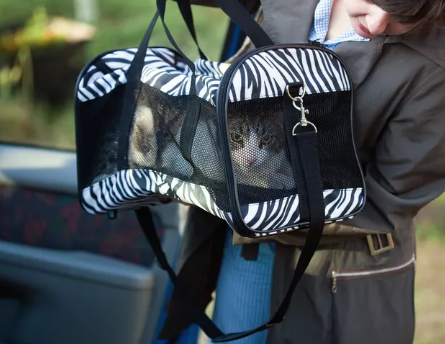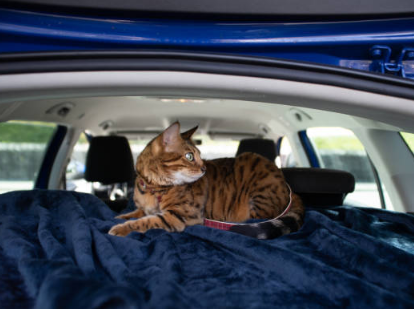It’s no secret that most cats hate rides. Most cats only occasionally drive around their lives. Riding in a car is usually just a veterinarian’s business, which leaves a negative impression of the car for cats. Plus, people don’t take cats for rides very often, so they may never get used to the feeling.
If short trips are stressful for your cat, long trips can be even worse. If you are planning a long driving trip with your cat, you may feel overwhelmed and worried, especially if you know that your cat will be stressed out in the car. While you may never be able to make your cat enjoy rides, you may be able to get him used to rides to take the stress out of him.

How to Get Your Cat Used to the Car
Your cat will most likely associate a ride with a visit to the vet. Most cats feel a lot of stress at the vet, so this connection can make everyone’s ride scary. Don’t let that stop you from taking your cat to the veterinarian for an annual or biennial check-up. Instead, start practicing the habit of driving until your cat starts to relax. This process can ultimately reduce the stress associated with car travel.
First, place the cat cage outside and open the door so your cat can explore it. Put a soft bed or blanket inside along with a favorite toy and/or some extra tasty treats. Don’t keep your cat inside, just let him get used to it. If he is willing to stay on the aircraft carrier for a few minutes, offer additional hospitality. If your cat is concerned about the carrier, consider spraying feline pheromones like Feliway inside to promote a sense of calm. However, do not spray pheromones directly on cats. If your cat likes it, you can also try putting some catnip in the cage.
Next, practice keeping your cat in a cage as if you were going out for a ride. Pick up the carrier and walk around with it. Then, let your cat out and offer valuable treats. Increase the amount of time you spend walking around the cage with your cat. Once your cat starts to relax, try to bring the cage to the car, but don’t go anywhere. Reward them with another high-value treat.
Then, add some small trips that have nowhere to go. Take a walk around the house and bring your cat home and take it out of its cage. Once again, a large number of delicacies are offered.
Gradually increase the length of the car trip, but don’t let your cat go too far. If your cat barks loudly or is out of breath, then the trip becomes too long and too fast. Slow down the process and see if your cat adapts.

Prepare for Long Trips
If you’re planning a longer trip that could take a few hours or more, then it’s best to get your cat ready in advance.
Be sure to have a few things ready before you actually travel. Make sure your cat wears an easy-to-release collar or harness with identifying information. Microchips are also important in case your cat comes loose or gets lost and the collar or harness comes off. Make a list of emergency veterinarians along the way in case your cat gets sick.
The night before the trip, place your cat in a small room complete with a cage, litter box, food, and water. This will make it easier to put your cat in the cage the next day. Plus, it helps your cat adapt to smaller spaces.
If the trip takes more than two or three hours, then your cat needs to take a break. Carry trash trays, food, and water with you during your trip. Take a break every two or three hours so your cat can relax, eat, drink, and use the litter box.
What to Do if Your Cat Is Not Used to Cars
Despite your best efforts, some cats will never be able to calm down while riding in the car. These cats may benefit from sedative supplements and/or medications. Talk to your veterinarian about the best options for your cat.
Nutritional supplements like Solliquin can help your cat relax without the use of medications. Before you venture out on a long trip, test it out in advance.
If the supplement doesn’t work, then it may be time to try a stronger drug. For the most anxious cats, sedatives may be the best option.
When You Arrive at Your Destination
Whether you’re moving to a new home or taking your cat on vacation, be aware that your cat will need time to adjust to their new surroundings. Gradually introduce your cat into his new space until he feels comfortable. Please be patient as this may take time.